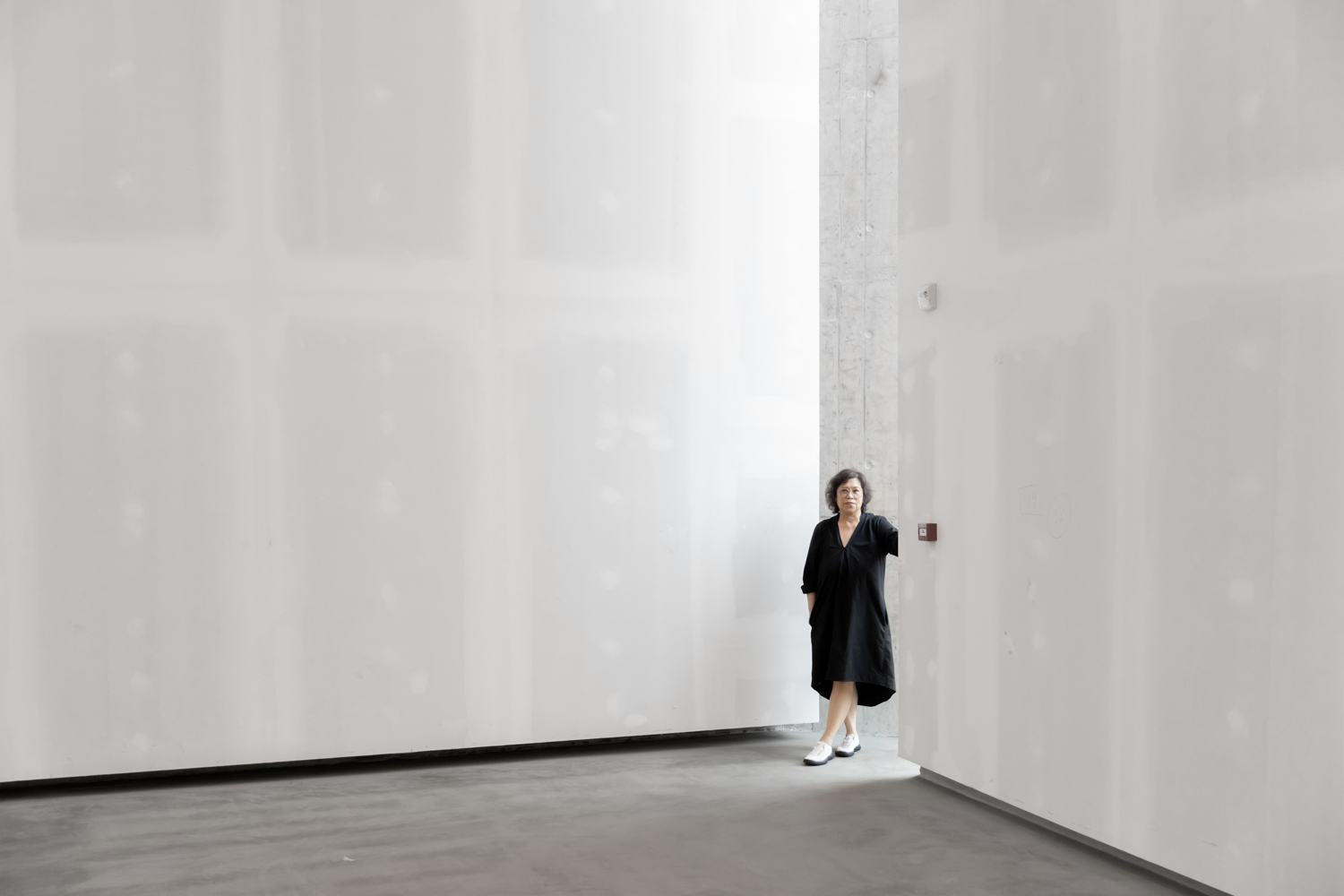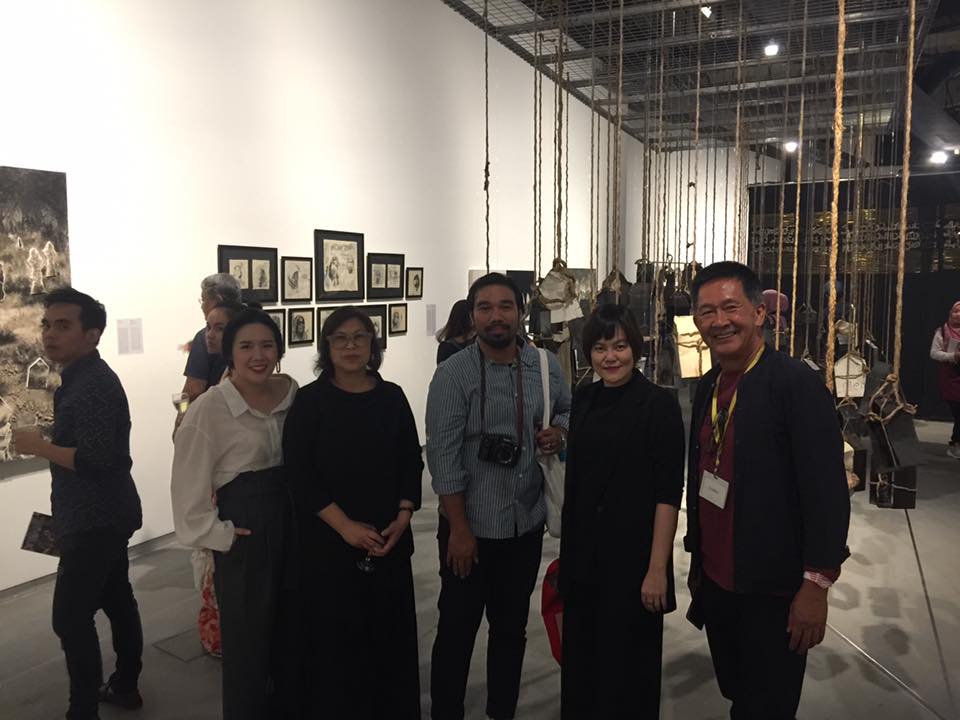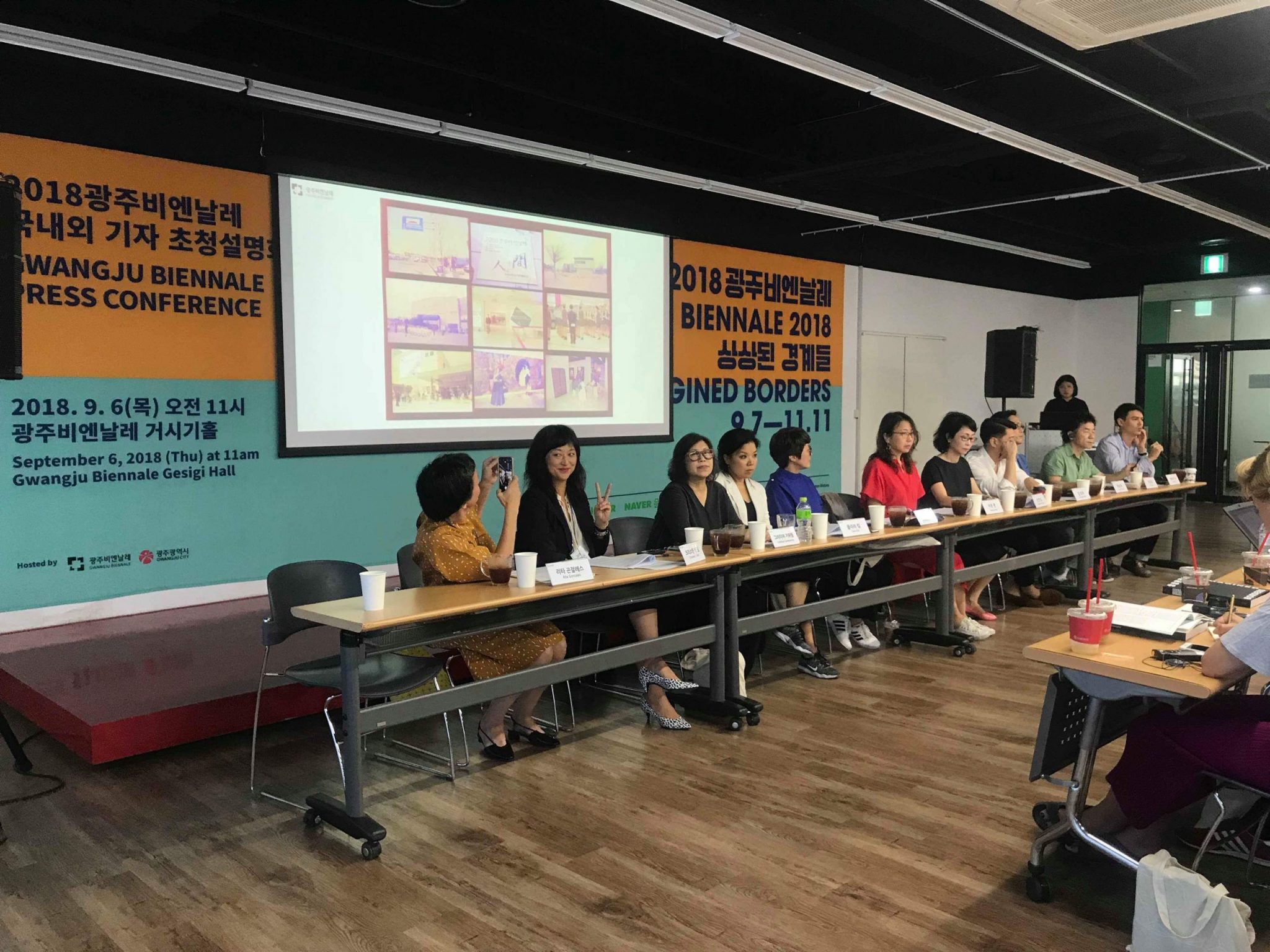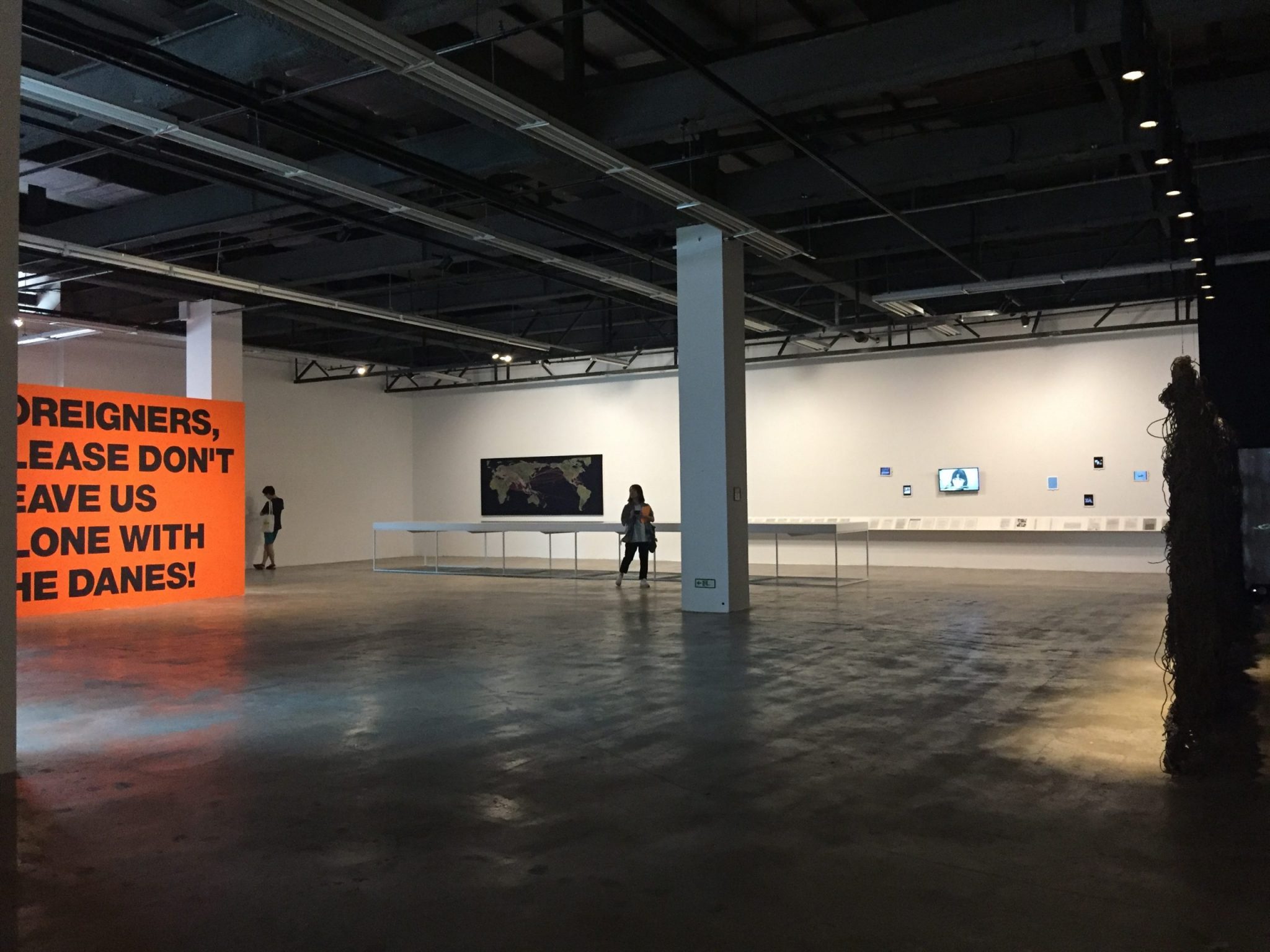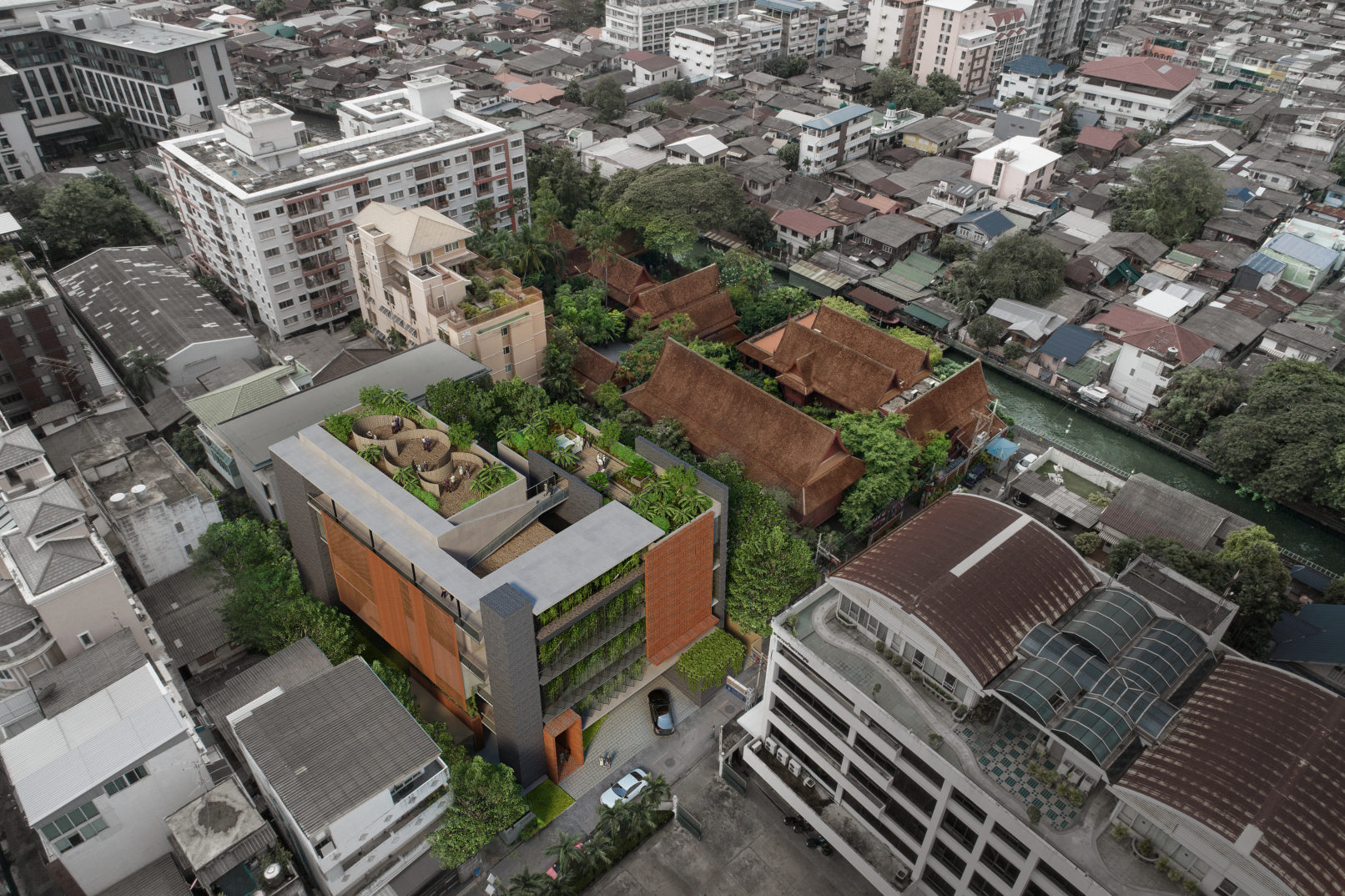FROM THE NEW GALLERY BUILDING TO THE FORTHCOMING ART EXHIBITIONS, GRIDTHIYA GAWEEWONG, A CURATOR FROM JIM TOMPSON ART CENTER, SHARES AN UPDATE ON HER RECENT PROJECTS
TEXT: PRATARN TEERATADA
PHOTO COURTESY OF GRIDTHIYA GAWEEWONG EXCEPT AS NOTED
PORTRAIT: KETSIREE WONGWAN
(For Thai, press here)
Except for the PhD added to her title a few years earlier, Gridthiya Gaweewong is still pretty much the same in the sense of her active role in the Contemporary Art Scene. She has, however, been in charge of exhibitions that are larger in scale, from the ‘Patani Semasa’ exhibition at MAIIAM Contemporary Art Museum (in which she curated while preparing for the submission of her thesis), the Gwangju Biennale, to Apichatpong Weerasethakul’s travelling exhibition that had visited countries worldwide before finishing up the last leg in Taipei. Then the pandemic happened.
“Things have changed tremendously. I’ve been teaching more following my friend’s invitation to host some online classes. I’ve become a part of The Alternative Art School (thealternativeartschool.net). The idea came from my artist and curator friends in the States around the discussion about how art schools have become incredibly expensive, and how there are people who wanted to study art but at the price they could actually afford. I was invited to be one of the teaching members of that school. There’s another lecturer from Brazil and the rest of them are all from the US. I teach alternative Art History. In the States, there isn’t a part of art history that has come from somewhere else. There were probably traces of Japanese and Chinese art in the country’s art history but they’re very ancient. Normally, from the western perspective, it was more of the white men’s art history, which mainly revolves around stories of white men being taught by a bunch of white men.”
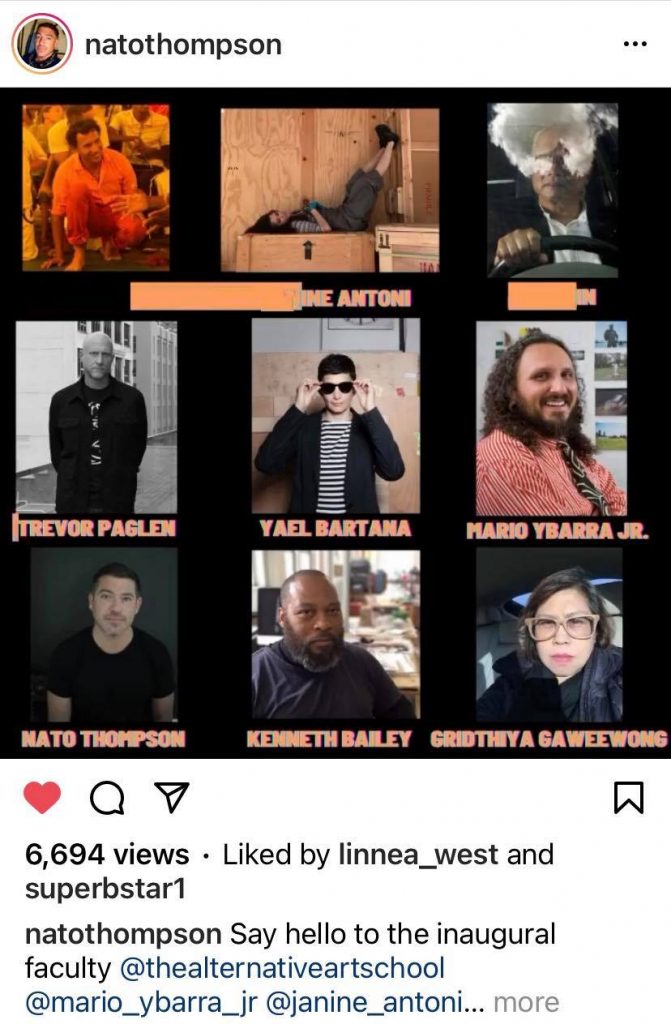
The Alternative Art School, 2020, Photo Courtesy of Nato Thompson
We met at The Jim Thompson Art Center to talk. The new building was almost completed with the entire 100% of its construction, there were just a few other details that need some touching up. The center’s official opening date, however, is due to be confirmed as a result of the ongoing situation concerning the virus. “The project was initiated a long time ago. Every time the board had an idea to renovate the building, there would be a political situation going on and the project had to come to a halt. But ultimately, the board decided to get on with it. Before COVID-19 hit, the Thai House had overwhelming visitors, especially during the high season, people were practically pouring in and waiting for hours to get in. The space got too small so we thought about constructing a new building with more parking spaces, and we could have more rooms for other activities as well,” Gaweewong recalled the genesis of the project.
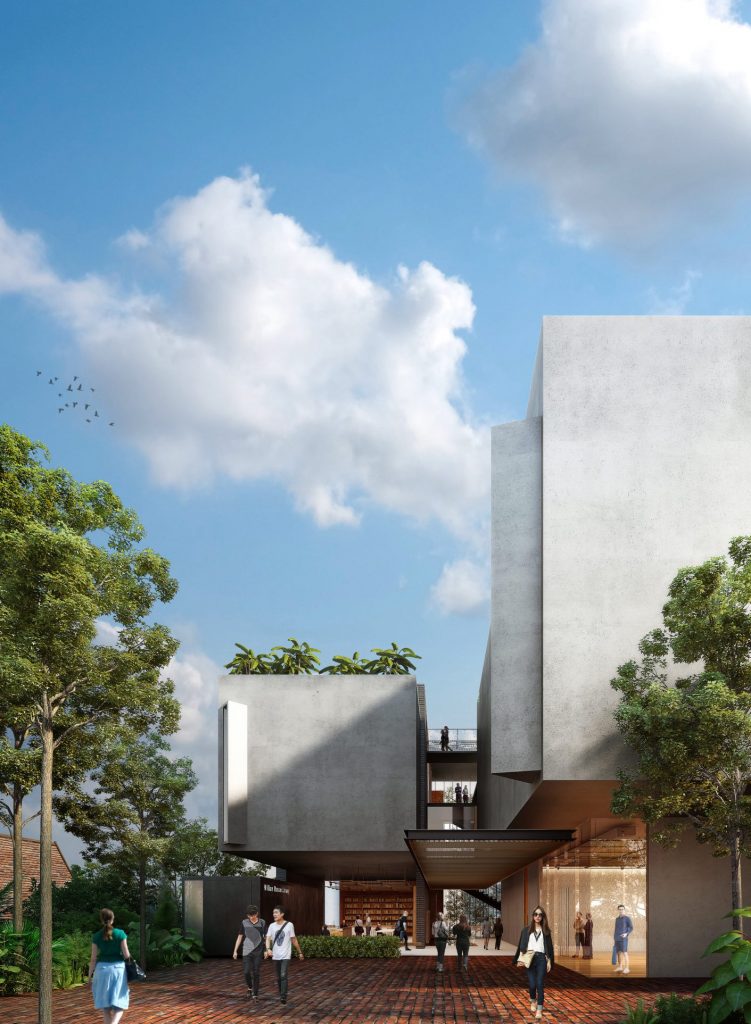
Rendering courtesy of The Jim Thompson Art Center
After the decision was made, the board hired Malina Palasthira’s Design Qua to be the architect for the project. “The board selected the architect and Palasthira also happens to be a friend of Eric Booth. An interesting fact is that the old building was originally designed by Sakran Poonyatalang, who is also a female architect. With MAIIAM, which was his personal project, Booth was working with Professor Rachaporn Choochuey. With this project, Palasthira was an interesting candidate because she had never done any big projects before this and the board likes to give people opportunities. Like me. They have given me an opportunity to work for them since I was still quite young.

After the decision was made, the board hired Malina Palasthira’s Design Qua to be the architect for the project. “The board selected the architect and Palasthira also happens to be a friend of Eric Booth. An interesting fact is that the old building was originally designed by Sakran Poonyatalang, who is also a female architect. With MAIIAM, which was his personal project, Booth was working with Professor Rachaporn Choochuey. With this project, Palasthira was an interesting candidate because she had never done any big projects before this and the board likes to give people opportunities. Like me. They have given me an opportunity to work for them since I was still quite young.
For Gaweewong, as the project’s Artistic Director, what the architect proposed was functionally fulfilling enough but there are still other dimensions that she found interesting about the design. “I particularly like the open space on the third floor that overlooks the entire building. There’s also a little corner where if you stand there, you can see the Thai house. It facilitates a connection between the Thai House and the new place. The building itself is a statement of the Art Center, which is under the same ‘Thainess’ umbrella. When people walked in here, they saw the place that used to look very Thai. But with the new building, Thainess becomes somewhat disconnected. In the meantime, there’s this distance between the past and present, and the new building signifies that we’re moving forward. That’s also what’s manifested in the debut show.”
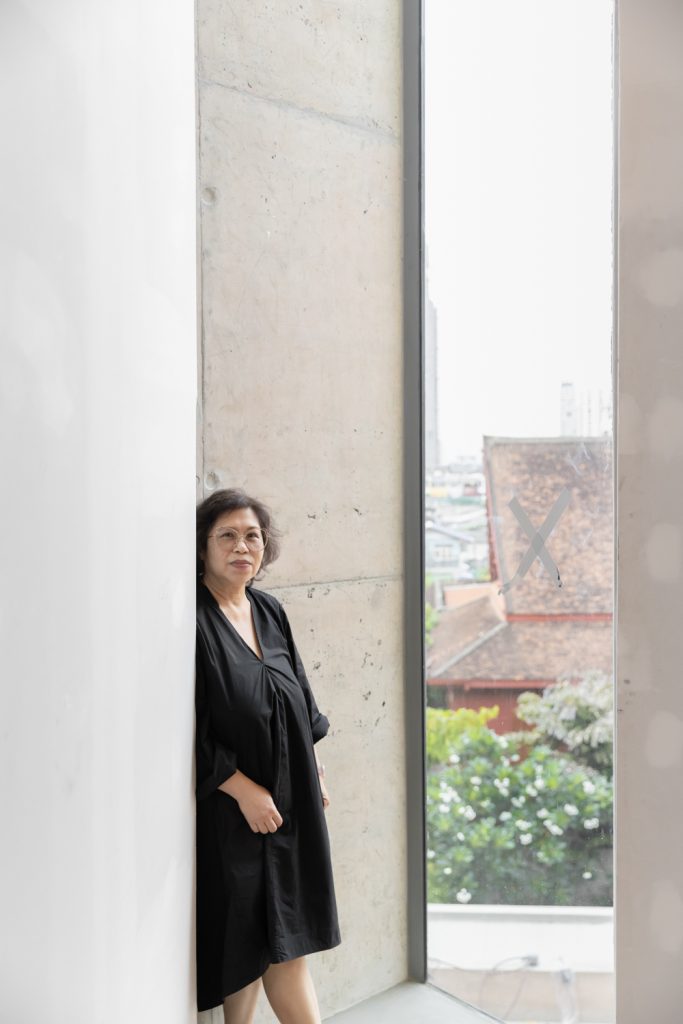
The Art Center’s first show consists of two parts: the documentary and the archive. “The archive that is under our care is partially made up of photographs and documents, some of them are confidential such as the letters and information from board meetings. We put everything together and sorted through the entire archive with Bruno Lemercier, the senior conservator as well as the main supervisor. We separated them into categories; what can and can’t be shared. Since there are so many things in the archive that I think we could put together pieces into countless exhibitions if we wanted to, so we had to work pretty hard to put together the story we would tell in our first show.” Gaweewong explained before continuing our conversation. “Most people know Jim Thomson for his disappearance and the silk business he started. But there are actually other aspects of his life. The team decided to tell his story that’s related to culture and art, using photographs and documents from the archive. There are few textile works from the early days of his business. We even have the name for the exhibition. It’s titled ‘News from Yesteryear.”
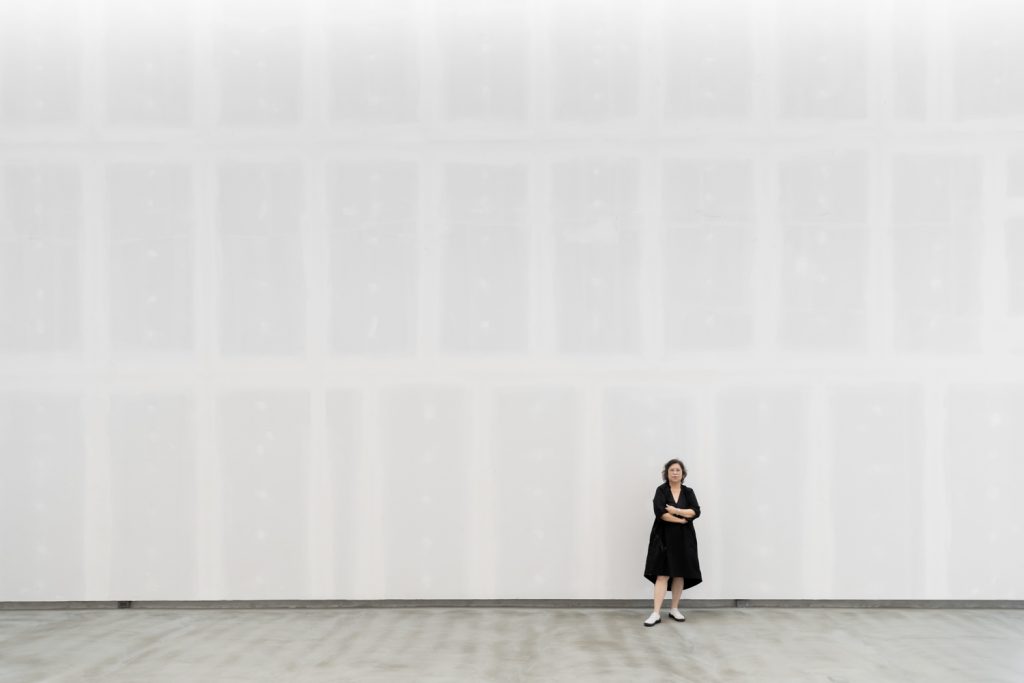
The big room has been prepared for the ‘Future Tense’ exhibition, which is very much a work in progress because we’re still in the process of calling for entries. “It’s because we want to change. After moving into the new building, people have asked. ‘What’s different?’ We have to answer this ourselves by looking back at the old chapter, at the place that we had been throughout the years, from 2003 and 2010 until it was closed down because of COVID-19. People used to find the place to be hard to reach. Everything seemed so exclusive or a space that would be visited by invitation only. Thinking about it now, we agreed that such an image isn’t going to work. So our new mission is to be more inclusive and to move forward. We need to talk about the future while knowing our roots. We want to talk about the past in a different way, though, especially the Cold War.”
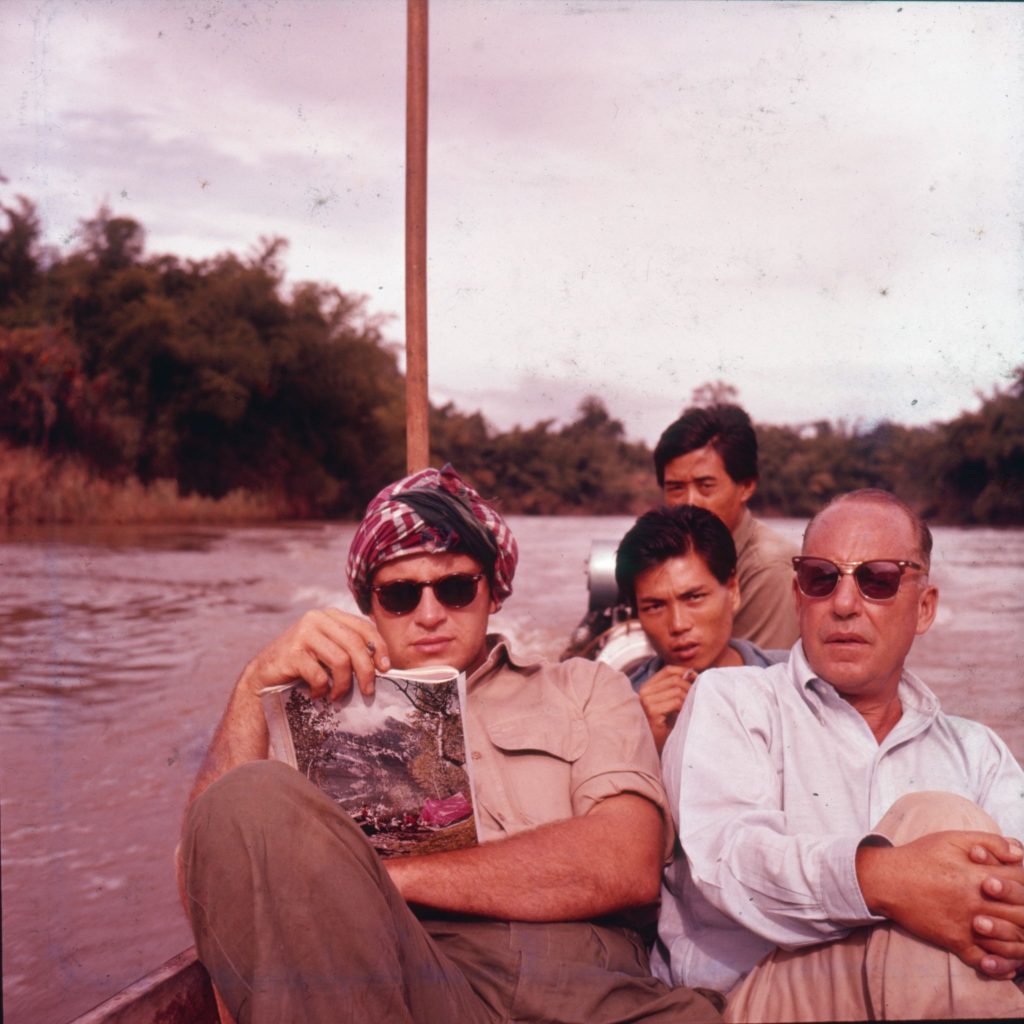
Jim Thompson with friends on the River Kwai returning from the railway trip. (Photo credit Donald Rochlen, Dec 1960, Courtesy of the James H.W. Thompson Foundation)
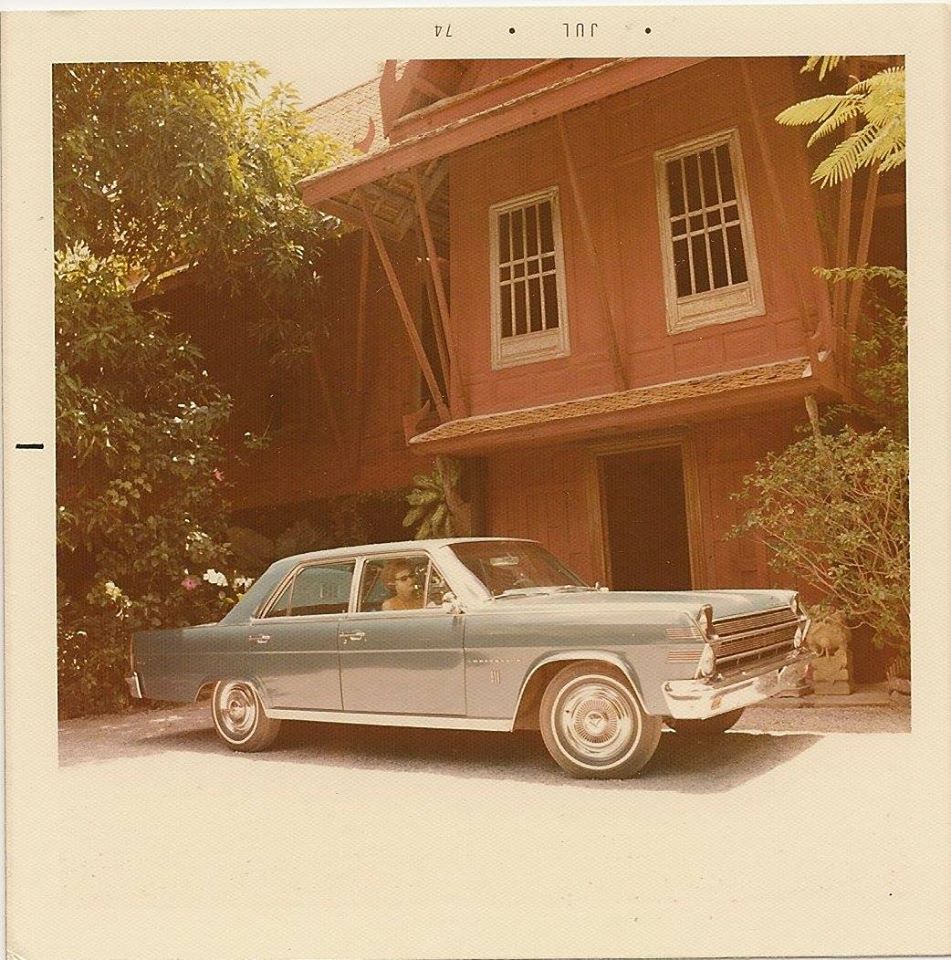
Until the 80s, visitors to the Jim Thompson House Museum used to park their car in the courtyard, like on this photograph taken in 1974 (unknown photographer, Courtesy of the James H.W. Thompson Foundation)
Why the Cold War? “It’ isn’t just a sentiment we have as a society. Everyone thinks that all these problems we’re facing, whether they’re political issues, or structural dilemmas, are the fallouts of the Cold War. It was the time Thailand was facing its own Americanization. And what organization would discuss the Cold War better than Jim Thompson? Jim disappeared at the peak of the Cold War tension, right before the Vietnam War began.”

Besides Thailand, The Jim Thompson Art Center is opening for proposals from around the world. “But we still don’t have that much money so we stated in the Call for Entries that we want works that could be digitally transferred. They can be in the video or film format. After a few days, we’ve had a lot of international entries, from Germany, Nigeria. They saw the announcement on our Instagram account.”
What will the ‘Future Tense’ exhibition end up being like? Gaweewong still doesn’t have any definite answer. But what’s interesting about the selection process is panel of invited curators, which consists of Grace Sambah (Indonesia) Kathleen Ditzig (Singapore) Vuth Lyno (Cambodia) and Arin Rungjang from Thailand, all with highly active roles in the region. The project has Gaweewong and David Teh as the co-facilitators. Future Tense will be quite a meaningful and intense debut show for the new Art Center. It also sends a signal to the art communities in Thailand and Southeast Asia that the place has the potential to become one of their new playgrounds. For the young generation curators, this is where they can show everyone what they can bring to the table, especially with the limited number of art spaces in this region that actually allow a true free play.
(Future Tense extends the Call for Entry deadline to May 10th, 2021).

